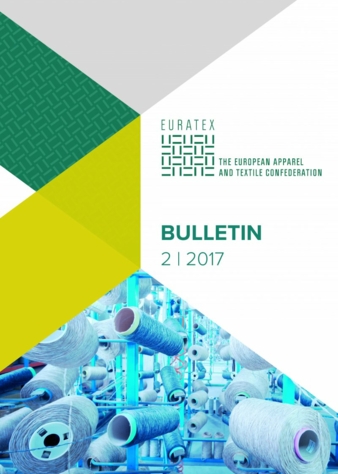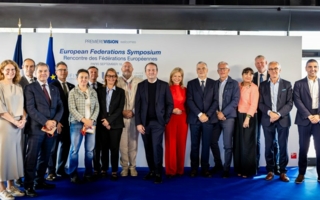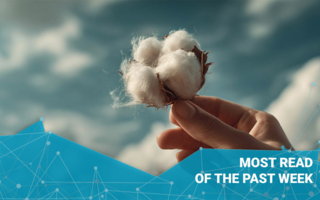13/07/2017 – Euratex — auf Deutsch lesen
The Bulletin 2 2017
The latest report provides an in-depth analysis of the EU Textile & Clothing external trade for 2015-2016!
?It includes trade trends by sector (i.e. fibres, yarns, fabrics, carpets, technical textiles, home textiles, home textiles, workwear, men & womenswear), by products and by EU main trading partners.
Good performances of EU exporters in technical textiles and menswear
Exports of technical textilesb outside the EU-28 once again increased year-on-year. This sector is a pillar of textile exports outside the EU with a 38% share in 2016. This growth translated into almost €10 bn of exports, an increase of +2.4% in value. With 20% of technical textile purchases from the EU-28, the USA was far and away the main client.
With a +2% year-on-year increase, menswear exports outside the EU-28 still accounted for 23% of total clothing exports amounting to more than €5 bn. The leading buyer of menswear, Switzerland, reduced its purchases in value (-3.9%). There was noteworthy double-digit growth in the value of exports to South Korea, Australia, Mexico, Serbia, Israel and Ukraine. The three major menswear products for export were: trousers (32% of category exports), shirts (19%) and coats (17%). Purchases of all three were up thanks to the weak euro (€).
Furthermore, exports of rugs and carpets outside the EU-28 expanded again strongly in value by +5.5%. This sector represented 4.3% of all textile exports outside the EU. Customer-wise, the four main buyers (USA, Switzerland, Norway and Russia) absorbed 49% of exports of rugs and carpets outside the EU.
EU Imports surge in home textiles and clothing articles
Activity in homebuilding varied widely depending on the Member State, and purchasing of homeware followed suit. Nevertheless, imported home textiles took advantage of the situation of lower average unit prices, resulting in rises of +3.3% in value corresponding to an increase of €192 million. This growth was mainly attributed to bed and home linens. Imports of home textiles from outside the EU reached €6 bn and were mainly divided among four countries: China (share 33%), Pakistan (share 25%), Turkey (share 16%) and India (share 11%). Besides, there were remarkable gains in value for Vietnam, Morocco, Taiwan and Ukraine.
China
In 2016, EU imports of menswear climbed to more than €20 bn (25% of total clothing imports), with a +0.5% increase in value and +4.4% in volume terms, leading to a -3.7% fall in the average unit price. Of the five main imported menswear items (trousers, shirts, coats, underwear, jackets), only shirts suffered weaker demand. China remained the main supplier of menswear. In value terms, its share of total imports stood at 28%, representing another year of steady decline. The EU-28’s second ranked supplier, Bangladesh, continued its inexorable rise adding +8.5% to improve its market share. A comparable situation was observed in imports coming from Pakistan which added +5.8% in value.
Imports of womenswear reached €29 bn (36% of total clothing imports), with a +0.8% increase in value. Imports rose for the five main imported items: trousers, skirts and dresses, coats, blouses and underwear. China continued to be the main supplier but its share was being eroded year-on-year. Due to continued annual expansion of its import share, Bangladesh was inevitably next in line behind China, with value increasing by +13.7%. In third place, Turkey continued to be a preferred traditional supplier even with a slight dip of -0.3%.Among other clothing articles, EU imports of worn clothing achieved an outstanding growth while pullovers & cardigans have pointed down.




